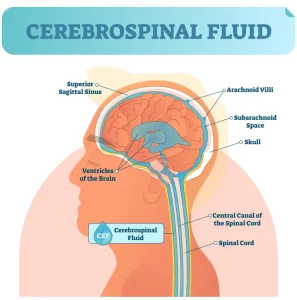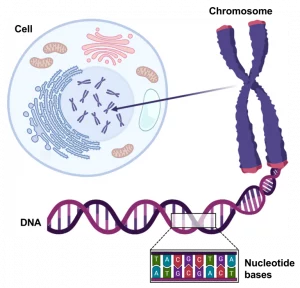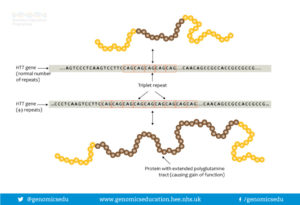
Snapshot: What is intelligibility?
Speech intelligibility refers to how many words can be correctly understood by a listener. For example, if someone says the phrase, “My name is John,” and a listener hears, “My Read More…
Support the Ataxia Research Drive before 12/31/2025 to fuel progress toward treatment development. DONATE NOW
A collection of resources for individuals and families affected by Spinocerebellar Ataxia type 28.
Spinocerebellar Ataxia type 28 (SCA28) and Autosomal recessive spastic ataxia type 5 (SPAX) are two types of Ataxia caused by mutations to the AFG3L2 gene. Both SCA28 and SPAX5 lead to problems with balance and coordination, as well as other symptoms.
For complete information about symptoms, diagnosis, and treatment of Ataxia, visit our What is Ataxia? page. This page contains NAF’s resources that are specific to SCA28.
Sign up for our mailing list to stay up-to-date on Ataxia news.
Presented by Dr. Francesca Maltecca
This webinar gave an overview of the causes and symptoms of SCA28 & SPAX5, the typical diagnostic journey for those affected, what to expect for clinical care, and an overview of current research into the disease.
NAF offers webinars on many topics to help you live better with Ataxia. Visit www.ataxia.org/webinars to find other helpful presentations.
Participating in a research study or clinical trial is one way to take an active role in furthering understanding and treatment of Ataxia. It is also a way to get access to new treatment options before they are widely available. To find studies that are enrolling patients, visit our Help Develop New Treatments page.
Spinocerebellar Ataxia type 28 (SCA28) and Autosomal recessive spastic ataxia type 5 (SPAX) are two rare neurodegenerative disorders. They are both caused by the AFG3L2 gene on chromosome 18p11. Heterozygous AFG3L2 gene mutations cause SCA28. Homogeneous AFG3L2 gene mutations cause SPAX5).
Both SCA28 and SPAX5 are rare disorders. Their exact prevalence worldwide is not known. However, approximately 1.5% of all Autosomal Dominant Cerebellar Ataxia cases in Europe are SCA28.
Like many other forms of Ataxia, both SCA28 and SPAX5 are marked by poor balance and coordination. In fact, the word Ataxia means incoordination. There can also be problems coordinating muscles that control speech and swallowing.
For people with SCA28, other common symptoms include unclear speech, vision problems, and overactive reflex responses. Less common symptoms include cognitive difficulties, memory and attention deficit, intellectual disability, and behavior problems.
For people with SPAX5, other common symptoms include spasticity (involuntary muscle tightening causing spasms), jerky eye movements, dystonia (involving muscle twisting), and epilepsy.
SCA28 symptoms usually begin in young adulthood, around age 19-27 years old. However, symptoms can begin as young as 3 years old and as late as 76 years old. The severity of symptoms can vary considerably, even within families. SCA28 usually progresses very slowly. For some people, symptoms can remain mild for decades after onset. Lifespan is generally not shortened by the disease.
SPAX5 symptoms usually begin during young childhood, before age 10. However, symptoms can begin later in childhood. The severity of symptoms may vary considerably, even within families. SPAX5 typically has more severe symptoms than SCA28. Complications from SPAX5 symptoms can result in premature death.
Treatments such as physiotherapy, occupational therapy, and speech-language therapy can significantly improve the lives of people with SCA28 and SPAX5.
Both SCA28 and SPAX5 are genetic disorders. This means that they are inherited diseases. The abnormal gene responsible for this disease is passed along from generation to generation by family members who carry it. Genetic diseases like SCA28 and SPAX5 occur when one of the body’s 20,000 genes does not work properly. Genes are microscopic structures within the cells of our bodies that contain instructions for every feature a person inherits from his or her parents.
SCA28 is an autosomal dominant disease, meaning individuals of either sex are equally likely to inherit the gene and develop the disease. We call the AFG3L2 gene mutations that cause SCA28 “heterozygous”, since there is only one mutation on one copy of the AFG3L2 gene. Each child of a person with SCA28 has a 50% chance of inheriting the gene that causes SCA28. You only need one copy of an SCA28-related mutation to develop symptoms.
SPAX5 is an autosomal recessive disease, meaning individuals of either sex are equally likely to inherit the gene and develop the disease. We call the AFG3L2 gene mutations that cause SPAX5 “homozygous”, since two mutations are needed to develop this type of ataxia. People with SPAX5 have one mutation on both copies of the AFG3L2 gene. If you only have one copy of a SPAX5-related mutation, you do not develop symptoms. People one copy of a SPAX5-related mutation are called carriers, since they carry the gene.
Gene tests can be performed for diagnostic purposes to determine what kind of Ataxia is within a person or family. Genetic testing can also be done, in some circumstances, even before there are symptoms, to determine whether a person carries the abnormal gene or genes that cause Ataxia. This is called predictive or presymptomatic testing. A gene test can also be used to determine whether a fetus has an abnormal Ataxia gene. This is called prenatal testing. Anyone who is considering a predictive or prenatal test should consult with a genetic counselor to discuss the reasons for the test, the possible outcomes, and how those outcomes might affect the person emotionally, medically, or socially.
A neurologic examination can determine whether a person has symptoms typical of SCA28 or SPAX5. This suspected diagnosis is then confirmed through brain imaging, such as MRI, and genetic testing to detect the presence of the abnormal gene that causes SCA28 or SPAX5. A neurologist is often the most helpful specialist in recognizing symptoms and diagnosing the disease that causes Ataxia. A medical geneticist, genetic counselor, or other SCA28 expert may need to be consulted regarding genetic testing results. Because the type of mutations causes SCA28 and SPAX5 look similar to eachother, it can be difficult for generalist clinicians to interpret results.
SCAsource provides Ataxia research news, directly from researchers to the Ataxia community. Visit SCAsource to see their full collection. Here is a collection of articles about SCA28.

Speech intelligibility refers to how many words can be correctly understood by a listener. For example, if someone says the phrase, “My name is John,” and a listener hears, “My Read More…

Speech not only consists of the words we say, but how we say them. That “how” is what is called prosody: the pitch, loudness, and timing of speech. The term Read More…

Written by Ziyang Zhao Edited by Dr. Hayley McLoughlin A newly developed smartphone application will allow patients to assess ataxia at home. There’s an interesting problem in science that’s often Read More…

Public transit may not be the first thing that comes to mind when we think about the brain, but it’s a great way to understand how all the parts of Read More…

A gene is the basic physical unitof heredity. Every living cell contains genetic information that determines an organism’s development, form, and function. This genetic information is encoded by two macromolecules: Read More…

The information that allows the normal development and functioning of each human being is coded in DNA, which exists in all cells of the body. Several successive segments of DNA Read More…
